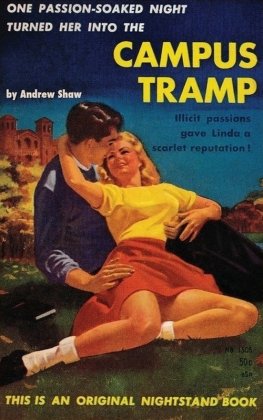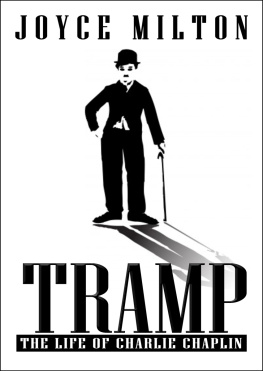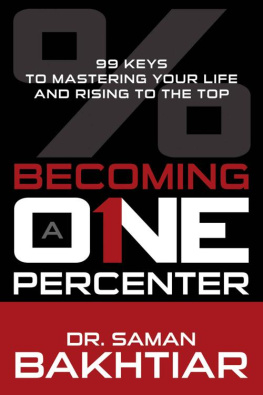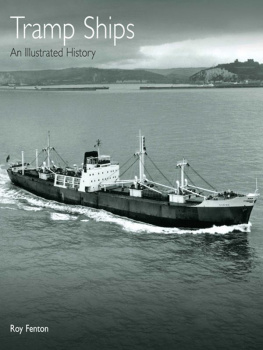K. Randall Ball - Terry the Tramp: The Life and Dangerous Times of a One Percenter
Here you can read online K. Randall Ball - Terry the Tramp: The Life and Dangerous Times of a One Percenter full text of the book (entire story) in english for free. Download pdf and epub, get meaning, cover and reviews about this ebook. year: 2011, publisher: Motorbooks, genre: Non-fiction. Description of the work, (preface) as well as reviews are available. Best literature library LitArk.com created for fans of good reading and offers a wide selection of genres:
Romance novel
Science fiction
Adventure
Detective
Science
History
Home and family
Prose
Art
Politics
Computer
Non-fiction
Religion
Business
Children
Humor
Choose a favorite category and find really read worthwhile books. Enjoy immersion in the world of imagination, feel the emotions of the characters or learn something new for yourself, make an fascinating discovery.

- Book:Terry the Tramp: The Life and Dangerous Times of a One Percenter
- Author:
- Publisher:Motorbooks
- Genre:
- Year:2011
- Rating:3 / 5
- Favourites:Add to favourites
- Your mark:
- 60
- 1
- 2
- 3
- 4
- 5
Terry the Tramp: The Life and Dangerous Times of a One Percenter: summary, description and annotation
We offer to read an annotation, description, summary or preface (depends on what the author of the book "Terry the Tramp: The Life and Dangerous Times of a One Percenter" wrote himself). If you haven't found the necessary information about the book — write in the comments, we will try to find it.
Terry the Tramp: The Life and Dangerous Times of a One Percenter — read online for free the complete book (whole text) full work
Below is the text of the book, divided by pages. System saving the place of the last page read, allows you to conveniently read the book "Terry the Tramp: The Life and Dangerous Times of a One Percenter" online for free, without having to search again every time where you left off. Put a bookmark, and you can go to the page where you finished reading at any time.
Font size:
Interval:
Bookmark:

The Life and Dangerous Times of a One Percenter
K. RANDALL BALL

In Loving Memory of J.J.
August 24, 1948December 27, 2010
Well Never Forget You, J.J.
Ode to J.J.
Of all my many brothers
Whove ridden by my side
Whether living near or far
There is just one I can confide
His knees are always in the breeze
His face is in the wind
This brother has ridden further
Than the rest of us, my friend
Not just on the weekends
Not just to the store
Whether its 100 degrees
Or a straight-up downpour
If his bike is down
Its no problem, you see
Cuz this brother is no dummy
Hes got him two or three
So in recognition of brother J.J.
Who is always in the wind
Hes put more miles on this motorcycle
Than he put on any girlfriend
Hey, that is no small feat, my brother
So its with respect we say
We always give what we get
Yes, thats the Vago Way!

I WAS A CHILD OF THE SIXTIES, born in 1948, one year after Terry the Tramp, the subject of this book. Like Terry I lived through the massive social changes that took place after World War II and throughout the sixties, and like Terry, I became immersed in the culture of motorcycle clubs. As I got into writing this book, it became apparent that the societal changes occurring when Terry and I were young were reflected within the changes that occurred in the motorcycling culture, and particularly in motorcycle clubs. Why did clubs change from straight-laced guys and couples in matching pressed uniforms into absolute wild men on bobbers, then choppers, wearing wild, unruly mountain-man attire?
I dug into our ugly history as far back as the 1930s, a time when you werent shit unless you were born into the correct family, went to the right school or church, had the appropriate shade of skin pigmentation, and lived in an upscale neighborhood on the right side of the tracks. The Depression hit like a financial sledgehammer in the early thirties and society flipped upside-down. We were still reeling from the worst financial chaos in our countrys history a decade later when we found ourselves being dragged into a world war. By the end of 1945, we had endured ten years of severe economic depression, followed by four years of violent global conflict.
When men returned from the war, they returned forever changed. Some were able to assimilate back into society, but for others, the societal norms and family ties that once shaped their every action no longer held the social leverage and power they had before the war. Many men found themselves unwilling to accept the rigid class structure society enforced in the pre-war years. Men from all social strata had fought side-by-side; in the battlefields of Europe and the Pacific, class structure had been replaced by military ranks. Pressure came from officers, regardless of what social class that man had been in prior to the war. When these men returned to the United States, they were no longer willing to accept the station of life into which they had happened to be born. When an American returned home after experiencing the horrors of war, no one was going to tell him what he could or could not do.
Many men found themselves unwilling to accept the rigid class structure that society had enforced in the pre-war years.
Motorcycling had been hugely popular in the early years of the internal-combustion engine. At that time automobiles were primarily expensive, one-off vehicles, hand-built by artisan coachbuilders. Motorcycles presented an inexpensive alternative to these pricey conveyances. That all changed when Henry Ford introduced the Model T, a mass-produced production-line vehicle that sold for less than many motorcycles. From the minute the Model T hit the market, motorcycle sales began to fall.
This slide in motorcycle sales picked up steam during the recession. At the peak of the motorcycling boom there were hundreds of motorcycle manufacturers in the United States; by the time the Great Depression had taken hold that number dwindled to threeHarley-Davidson, Indian, and Excelsior-Henderson. Within a couple years Excelsior-Henderson closed up shop, leaving just two.
But the war opened motorcycling to a broad audience as young men were drafted by the tens of thousands, and many thousands more volunteered to fight. Many of these young people learned how to ride motorcycles at training centers throughout the country. Young soldiers were taught to operate motorcycles for the Motor Transport Division, Signal Corps, Military Police, and numerous other branches. Army procurement officials hired former competitive riders, dealers, salesmen, and motorcycle mechanics to act as civilian instructors, introducing thousands of enlisted men and noncommissioned officers to motorcycling.
This influx of new riders proved a very good thing for the motorcycle industry. These new riders had cash to spend; after the war, Americans had discretionary income for the first time in two decades. Many Americans feared that the end of World War II and the subsequent drop in military spending might bring back the hard times of the Great Depression. Instead, pent-up consumer demand fueled exceptionally strong economic growth in the postwar period. The automobile industry successfully converted back to producing cars, and new industries such as aviation and electronics grew by leaps and bounds. A housing boom, stimulated in part by easily affordable mortgages for returning members of the military, added to the expansion. At the same time, the jump in postwar birthsthe baby boom that occurred after vets returned home and began breeding prolificallyincreased the number of future consumers.
At the time the American Motorcyclist Associationthe AMAwas ruled under the iron fist of one E.C. Smith, who served as the general secretary of the organization from 1928 until 1958. The AMA dictator wasnt terribly impressed with the behavior of many of these new riders, many of whom tried to recreate the excitement and thrills of their wartime adventures aboard their motorcycles. In the face of an increasingly unruly group of young riders, Smith stressed rules and regulations. In a lengthy speech to the AMA membership, he harped on expansion of the domestic motorcycle market in view of the fact that motorcycling in the United States. was centered on sporting and recreation, because the automobile had eclipsed the motorcycles utility and transportation applications. Smith tried to sever ties to Canadian competitive riders because of their predilection for FICM rules, which allowed them to ride British bikes. He wanted to limit AMA activities north of the border to clubs that favored American machines for competition.
In 1942, Arthur Welch, the editor of Motorcyclist, was contracted to run a small ad for a foreign brand of motorcycle in the January 1943 edition. Motorcyclist was the only motorcycle magazine in the country, and was still controlled by the AMA at that time. Smith telephoned Arthur Welch from Columbus and reamed him a new one, stating that he was doing the American motorcycle industry a disservice by promoting information that might encourage the purchase of foreign machines. This heavy-handed approach did not sit well with Welch, and as the war was winding down in 1945,
Font size:
Interval:
Bookmark:
Similar books «Terry the Tramp: The Life and Dangerous Times of a One Percenter»
Look at similar books to Terry the Tramp: The Life and Dangerous Times of a One Percenter. We have selected literature similar in name and meaning in the hope of providing readers with more options to find new, interesting, not yet read works.
Discussion, reviews of the book Terry the Tramp: The Life and Dangerous Times of a One Percenter and just readers' own opinions. Leave your comments, write what you think about the work, its meaning or the main characters. Specify what exactly you liked and what you didn't like, and why you think so.







